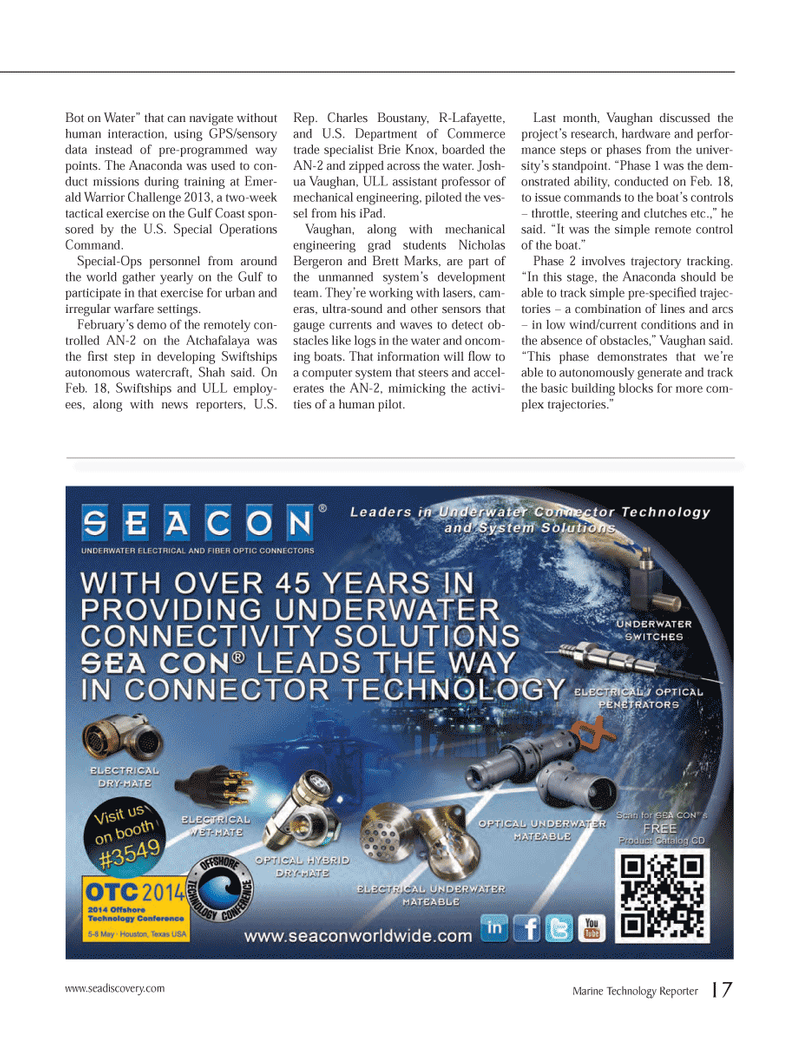
Page 17: of Marine Technology Magazine (April 2014)
Offshore Energy
Read this page in Pdf, Flash or Html5 edition of April 2014 Marine Technology Magazine
Bot on Water” that can navigate without human interaction, using GPS/sensory data instead of pre-programmed way points. The Anaconda was used to con- duct missions during training at Emer- ald Warrior Challenge 2013, a two-week tactical exercise on the Gulf Coast spon- sored by the U.S. Special Operations
Command.
Special-Ops personnel from around the world gather yearly on the Gulf to participate in that exercise for urban and irregular warfare settings.
February’s demo of the remotely con- trolled AN-2 on the Atchafalaya was the fi rst step in developing Swiftships autonomous watercraft, Shah said. On
Feb. 18, Swiftships and ULL employ- ees, along with news reporters, U.S.
Rep. Charles Boustany, R-Lafayette, and U.S. Department of Commerce trade specialist Brie Knox, boarded the
AN-2 and zipped across the water. Josh- ua Vaughan, ULL assistant professor of mechanical engineering, piloted the ves- sel from his iPad.
Vaughan, along with mechanical engineering grad students Nicholas
Bergeron and Brett Marks, are part of the unmanned system’s development team. They’re working with lasers, cam- eras, ultra-sound and other sensors that gauge currents and waves to detect ob- stacles like logs in the water and oncom- ing boats. That information will fl ow to a computer system that steers and accel- erates the AN-2, mimicking the activi- ties of a human pilot.
Last month, Vaughan discussed the project’s research, hardware and perfor- mance steps or phases from the univer- sity’s standpoint. “Phase 1 was the dem- onstrated ability, conducted on Feb. 18, to issue commands to the boat’s controls – throttle, steering and clutches etc.,” he said. “It was the simple remote control of the boat.”
Phase 2 involves trajectory tracking. “In this stage, the Anaconda should be able to track simple pre-specifi ed trajec- tories – a combination of lines and arcs – in low wind/current conditions and in the absence of obstacles,” Vaughan said. “This phase demonstrates that we’re able to autonomously generate and track the basic building blocks for more com- plex trajectories.”
Marine Technology Reporter 17 www.seadiscovery.com
MTR #3 (1-17).indd 17 4/9/2014 10:32:39 AM

 16
16

 18
18
